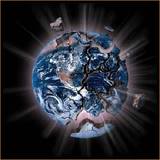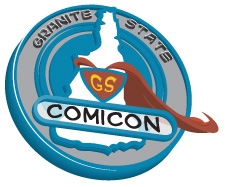
There’s never been a shortage of prose and film dealing with the end of the world, usually involving some wise but outcast person or group of people who detect the signs of the coming apocalypse and just manage to mobilize the rest of the world in time to forestall the end. However, as with so many other science fiction/fantasy themes, the treatment becomes stale and repeated, the fiction predictable. One can choose not to read the book or watch the movie when that happens; unfortunately, one cannot so easily escape the rantings of real world dystopian fantasists, something that I was forcefully reminded of after the east coast earthquake and Hurricane Irene, and the flooding associated with Tropical Storm Lee. To some, this confluence of events is a clear sign that Armageddon is imminent. In this piece (which is truly a rant) I’ll show how the current eschatological predictions are the same as the end of the world fiction–a pale repeat of many previous failed prophesies.
With so many failed predictions in history, I’ll provide just a few examples in each of three categories: Biblical prophesy, celestial events, and what I’ll call “calendar doom”. I’ll provide links to the 2012 doom predictions, but won’t discuss them at length. Even so, this will be another of my dissertation length posts–be forewarned!
Most Biblical prophesy seems to be based on passages in Luke, which predict a proliferation of war and strife (Luke 21:10) and all manner of natural disasters (Luke 21:11) as signs of the end times. And certainly a span of a several years that includes widespread famine, wars and strife between nations and/or sects of people, earthquakes and tsunamis and volcanoes and storms and drought–well, that matches up with the Bibilical prediction quite well. The only problem is that what I’ve just described, while perhaps an apt description of the first decade of this century, also describes the period from 70-80 AD (Roman civil wars and fighting against the Jewish uprising, Roman invasion of Scotland; eruption of Vesuvius and tsunamis in Italy; droughts in Germany and Italy; famine in Ireland and Italy; floods in England). Nor is this the only other period in history where the rather general “signs of the end times” applies. The period of the Hundred Years War certainly fulfills the “prophesy” (and with the Black Death killing 30% or more of Europe’s population, is probably the closest to being correct), as well as the four years of WWI and any number of other time frames. More specific proclamations of the beginning of the end times supposedly based on the Bible include William Miller’s prediction of the Second Coming of Christ and the end of the world by fire between between March 21, 1843, and March 21, 1844 (and subsequently, October 22nd of 1844 when the first prediction didn’t pan out). More recently (but in a strangely parallel way), Harold Camping initially predicted the end of the world sometime between Sep 15-27th, 1994 (based on a reference in John 21:1-14) and then May 21, 2011 (and now October 21, 2011). There have been any number of additional specific end-of-the-world predictions based on interpretations of the Bible, some by cultists, others from major religions–and yet we’re still here. As such, based on the historical record, predicting 2012 as the end of the world from Biblical prophesy has no basis in reality.
Another school of thought ascribes the end of the world in 2012 to some sort of cosmic event, either a collision with the supposedly mysterious rogue planet Nibiru, a killer solar flare (or coronal mass ejection), or a disastrous celestial alignment (refuted here). Most are familiar with historical occasions of Halley’s Comet being hailed as a harbinger of doom, starting at least as early as 989 AD and most recently in 1910, but there have been other predictions of the end of the world from celestial objects, including earlier predictions that Nibiru would end the world in May 2003. Similar predictions were made for Comet Hyakutake (1996), Comet Hale-Bopp (1997), and Comet SOHO (1998), with only those members of the Heaven’s Gate cult having their world come to an end…of their own volition. Further back in history, in 1186 AD, the Letter of Toledo claimed that the alignment of “all” 7 planets (all that were known at the time) in Libra on Sept 23rd would result in the “Deluge Conjunction” and in the end of the world (Bar Hebraeus, a Jacobite Syrian bishop, wrote “..all the astronomers predicted that a universal flood and a mighty whirlwind would take place in the world, and all mankind would perish.”) In 1974 a best selling book, The Jupiter Effect, predicted that the alignment of all the major planets on one side of the sun in 1982 would generate a combined gravitational force that would exert tidal forces on the Sun. These tidal forces, in turn, would increase sunspot activity that would cascade the earth with high-speed particles that would cause abrupt changes to the planet’s rotation. Yet in spite of all these predictions of the end of the world by cosmic misadventure, we’re still here. While a globe-altering event from space could happen (ask the dinosaurs), 2012 is no more and no less likely to be the year something like that happens…and the odds for any given year are exceedingly small.
Finally, there are the end-of-the-world predictions tied to what I call “calendar doom”–cataclysm tied to some specific date on a calendar, without necessarily any specifics as to its cause. For 2012 that comes in the form of Dec 21, 2012, and is primarily driven by the end of one of the periods (13 Baktun) in the Mayan Long Count Calendar. The three most comparable failed end-of-world panics associated with “calendar doom” were the end of the millennium in 1000 AD, the year 1666 AD, and Y2K. As with the Mayan Long Count calendar 2012 “predictions”, the panic associated with 1000 AD was largely based on the end of a major “era”–in this case 1000 years after the birth of Christ, with the expectation that the end of the millennium would see Christ’s second coming and with it the end of the world. Needless to say, the world survived the first millenium, giving rise to any number of other predictions based upon calendar numerology. Many saw 1666 as an end-of-the-world year because it represented the millennium plus the number of the beast. The year 2000, in addition to the concerns over the Y2K computer bug, also brought millennial fears (another major “era” ending) which were far more widespread because of modern communications. One site notes 42 failed predictions of the end of the world for the year 2000. In each case the end of some major epoch measured with some arbitrary time tracker (real, or contrived, as with 1666) supposedly presaged the end of the world. And yet–we’re still here.
I’ve touched upon several categories of failed end-of-the-world predictions that parallel those being made for Dec 21, 2012. I hope I’ve shown that these 2012 proclamations of doom are nothing more than rehashes of past failed end-of-the-world soothsaying, gussied up in new outerwear. Why some people get so worked up about these things is another article altogether, although there’s an interesting piece that looks at that question from a psychological perspective, and another that explains how the concept of cognitive dissonance allows believers of failed predictions to refuse to believe the predictions were wrong. In the interests of fairness, though, I’ll make my own prediction for those who are steadfast in needing an apocalyptic time frame. Sometime around 5 billion years from now, as our sun begins to transform into a red giant, life as we know it on earth will end. That’s just too far out for me to worry about, though!






Nice-I`m impressed by the detailed look taken at varying end of the world predictions. Had forgotten about the minor panics associated with comets…
I am purchasing my 2013 Mayan Calendar at Bed ,Bath and Ritual Sacrifice (the Pam Anderson/Baywatch Q’umarkaj). Real nice work on this.
Thanks Dome. Is that the 2013 Haab’ calendar or the 2013 Long Count (baktun) calendar? 🙂 I had a hard time limiting what I included–there are SO many failed end-of-the-world predictions. And recently another was dashed–see http://news.yahoo.com/debris-doomsday-comet-elenin-pass-earth-sunday-164605072.html. A sad day for end-of-the-worlders!